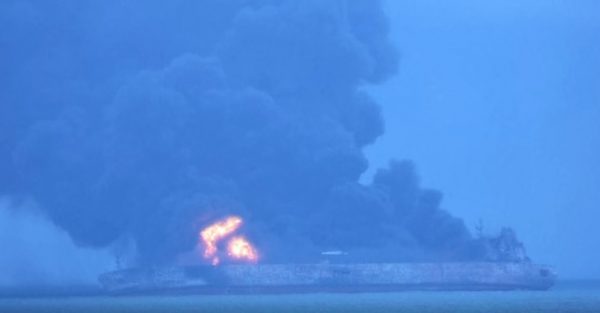The ‘Sanchi’ oil tanker, that collided with a freighter in Chinese waters over the weekend, could burn for two weeks up to one month, potentially expelling its bunker fuel, or the heavy fuel oil that powers a ship’s engines and contaminating the waters, according to South Korea’s Ministry of Oceans and Fisheries as cited by Reuters.
The tanker, operated by National Iranian Tanker Co, was sailing from Iran to South Korea, carrying 136,000 tonnes of condensate, when it collided with the ‘CF Crystal’, about 160 nautical miles off the coast, near Shanghai and the mouth of the Yangtze River Delta, on Saturday evening. The vessel went ablaze and has been on fire since then.
Bunker fuel is the dirtiest oil, extremely pollutant when spilled, but much less explosive. In the other side, fuel oil is relatively easy to contain, because volumes are lower and its viscosity means it’s easier to extract from water, though even small volumes can hurt marine life.
The problem is the ship’s heavy bunker fuel, as it burns slow and it’s heavy and will lay on the ocean and create heavy smoke, which spills and gets on birds, explained Chauncey Naylor, a US-based director of emergency response and training at Tyco Corp’s oil-fire specialists Williams Fire & Hazard Control.
Further, the Zhoushan fishing ground where the collision occurred is known as one of the biggest in the East China Sea, particularly for mackerel and croaker, according to Greenpeace. The Sanchi, a Suezmax tanker, may have been carrying about 1,000 tonnes by the time it hit the grain freighter, according to bunker fuel traders’ estimates as quoted by Reuters.
Park said it’s unlikely the oil will spread to South Korea at the moment because the tanker has moved 100 kilometres to the southeast.
The ‘Sanchi’ was carrying a total of 32 crew members, all of whom were reported missing, while one of them has been found so far.































































